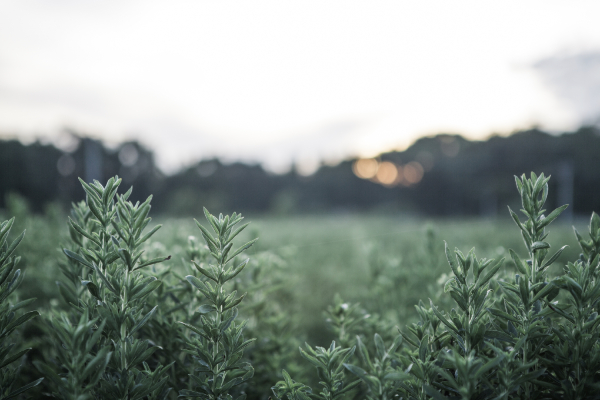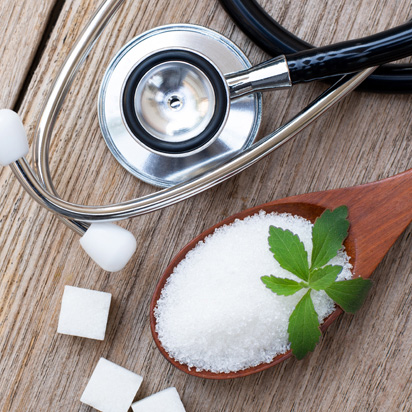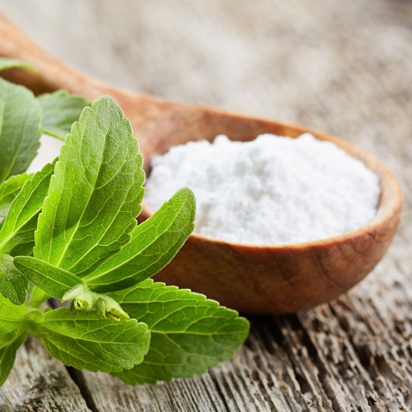
Growing stevia: the science behind stevia’s taste and sustainability
Where is stevia grown?
Stevia is a subtropical, perennial plant which grows best in environments with long days of sunshine, warm temperatures with minimal frost and adequate rainfall. The stevia plant genus includes over 100 species, and is cultivated throughout the world, but most predominately in China, Paraguay, Kenya, Zambia and the United States.
Stevia is known as a hardy plant, and depending on the region it may be harvested several times per year. PureCircle™ by Ingredion uses conventional breeding techniques to increase the sweet compounds found in the leaves of the plant (steviol glycosides). The extracts from the stevia plants, which are sold as sweeteners, are not genetically modified organisms (non-GMO).
Stevia farming provides a profitable crop for thousands of independent farmers of varying scales in Asia, South America, Africa and the United States. For some farmers, stevia is being cultivated as a cash crop on smaller plots of farmlands in addition to food crops for added income.
Stevia production and sustainability
While stevia helps those pursuing a healthier lifestyle by reducing the carbohydrates and calories in food and beverage products, it can also have a positive net benefit on our environment. Several aspects of stevia’s environmental advantages can be linked to its naturally high sweetness intensity. Stevia molecules can be up to 300 times sweeter than sugar, so less stevia can be used to sweeten foods and beverages. This high sweetness level can allow for greater efficiencies and smaller environmental impact, from farming to the finished ingredient.
According to Ingredion’s 2022 Comparative Life Cycle Assessment of Sweeteners, stevia has less environmental impacts across all common measures including climate change, land usage, water scarcity and cumulative energy demand when compared to full caloric sweeteners like cane sugar and high-fructose corn syrup on a sweetness equivalence basis. Meaning stevia’s tiny leaves can have a large impact on environmental impact savings.1
The development of more powerful stevia plant varietals plays an important role in stevia’s sustainability, and helping scale the most sought-after stevia sweeteners for global food and beverage brands. Years of traditional plant crossbreeding and agronomy science has resulted in new plant varietals, which have the highest performing yield of steviol glycosides to date.
Innovations in stevia production, such as bioconversion, also extend stevia’s sustainability story even further. Being able to help the leaf produce molecules which appear in small quantities, leads to stronger scale of stevia sweeteners like Reb M, and enables food and beverage brands to reach better-tasting and deep sugar reduction possibilities.
By choosing the natural sweetness of stevia, consumers can help people maintain a healthful and environmentally-friendly diet—and that is something that consumers, health professionals, and food producers can truly feel good about.
Stevia is a natural sweetener
The sweet components of the Stevia rebaudiana Bertoni plant called steviol glycosides, are extracted and purified to make high-purity stevia leaf extracts. Ensuring these sweet components are unchanged during the purification and extraction process is an important part of bringing stevia leaf extract from the leaf to the final product. A study conducted at the University of Bonn in Germany explored what happens to these sweet components of the stevia leaf when they go through the extraction and purification process.2
Due to the complex purification process, the natural authenticity or the “naturality” of high-purity stevia leaf extracts has been questioned. Thus, the objective of this study was to systematically determine if the steviol glycosides are modified during the commercial extraction and purification process used to produce high-purity stevia leaf extracts (i.e. steviol glycoside sweetener ingredients). The researchers focused on the nine steviol glycosides approved in 2010 by the global regulatory authority, the Joint Food Agriculture Organization/World Health Organization Expert Committee on Food Additives (JECFA). These steviol glycosides were in the original steviol glycoside JECFA approval and specification for high-purity stevia leaf extract ingredients.
The study investigated three commercial scale production batches of high-purity steviol glycosides. The samples for each commercial batch included the untreated stevia leaves from which the steviol glycosides are extracted, the first water infusion after the leaves have been steeped in warm water and the 95% high purity end product (i.e. the steviol glycoside sweetener ingredient). The samples were analysed using ultra-violet, high-performance liquid chromatography (UV-HPLC) and high-performance liquid chromatography electrospray ionisation tandem mass spectrometry (HPLC/ESI-MS/MS) to separate, identify and quantify the individual steviol glycoside molecules. The commercial samples tested in the study were provided by PureCircle, from PureCircle’s commercial extraction and purification production process of high-purity stevia leaf sweetener ingredients/extracts.
The researchers reported their results clearly show the end product of extraction and purification i.e. the commercial steviol glycoside sweetener ingredients tested in this study, with an estimated purity of more than or equal to 95%, contain the same nine steviol glycosides as the dried untreated stevia leaves and their hot water infusions. This demonstrates steviol glycosides are not affected nor modified through multiple steps in the commercial extraction and purification process.
These findings are significant because the fact the nine steviol glycosides in the end products remain unaltered and are identical to those in the intact stevia leaves provides support for the “naturality” or natural authenticity of high-purity stevia leaf extracts, also known as, high-purity stevia sweetener ingredients.
Stevia and biodiversity
According to the United Nations, agriculture is still the most prevalent employer in the world, delivering income for 40 percent of the world’s population. However, about 75 percent of crop biodiversity has been lost since the 1900s and yet biodiversity contributes to more wholesome diets, improved incomes for farming communities and sustainable farming practices.
Stevia has been able to provide an important role in biodiversity because it requires minimal land acreage, and allows farmers to diversify their crops. Unlike commodity crops, stevia is generally grown on smaller plots of land and provides supplemental income to the more commonplace “cash” crops.
Stevia research: understanding the leaf
Researchers have been hard at work to understand the connection between what is in the leaf and great tasting stevia. High yields, desired quality traits and dependable economic returns are key characteristics often researched of any domesticated commercial crop.
Stevia genome
Although systematic cultivation of stevia started in the 1970s in China, South America and Japan, only recent crop improvement efforts have been focused on making stevia more scalable with the most sugar-like steviol glycosides through traditional cross breeding.
To facilitate this, PureCircle invested in research that sequenced, generated genome assemblies, and fully annotated the genomes of three commercial stevia varieties with improved levels of the better tasting, more sugar-like rebaudiosides.4
From this research, we now have data that has been integrated into a comprehensive bioinformatics platform for visualisation and analytics of all available genomic, transcriptomic and metabolomic stevia datasets. This interface will enable specialists from multiple disciplines, such as chemists, biochemists and geneticists, to mine this platform to understand and improve existing steviol glycoside biosynthesis pathways through traditional breeding or discover new pathways or compounds for similar non-GMO improvement.
PureCircle’s study focused on the assembly of the genomes of three stevia varieties, which are all comparable to other published high-quality genomes of the Asteraceae. There appears to be expansion of the UGT family of enzymes, which play a critical role in the production of steviol glycosides; this expansion might help explain the diverse set of steviol glycosides found in stevia.
In addition to enabling the improvement of traditional breeding for agronomic and sustainability benefits, this new knowledge of the stevia genome can facilitate improvements in the abundance of the steviol glycosides that are more sugar-like in taste, thus enabling the development of high-purity Stevia leaf extracts for deeper reductions in sugar and calories in food and beverage products.
Other stevia science and research

Stevia allergy: are there allergic reactions to stevia?

Is stevia safe for children?

What is stevia?

Stevia safety

Diet, metabolism and weight management

Stevia and diabetes management

Stevia taste: how sweet is stevia?

2022 Sugar Reduction Life Cycle Assessment
Connect with PureCircle™ by Ingredion
Interested in learning more about PureCircleTM, stevia and the latest stevia leaf ingredients? Please contact us to help inspire your next sweet creation.
References
1. Milovanoff, A., Callaghan, K., Pillow, J., & Shah, B. (2022). (rep.). Comparative Life Cycle Assessment of Sweeteners. Ingredion.
2. Oehme A, Wüst M, Wölwer-Rieck U. Steviol Glycosides are not altered during commercial extraction and purification processes. Int J Food Sci Technol. 2017;52:2156-62. Available at: https://onlinelibrary.wiley.com/doi/abs/10.1111/ijfs.13494
3. JECFA. 73rd Meeting, Compendium of Food Additive Specifications. Mongraph. 2010;17-22.
4. Stephen E. Schauer PhD1 , Runchun Jing PhD2 , Ong Seong Siang PhD2 , Wong Yeen Yee PhD2 , Yucheng Bu 2 , Jianning Chen 2 , Jifeng Tang PhD1 , Raymond van Daelen PhD1 , Tengfang Huang PhD1 , Indra Prakash PhD3 , Priscilla Samuel PhD4 , Antoine Janssen MSc1 , Marcel van Verk PhD1 , Fayaz Khazi PhD1 , Walter Nelson MBA 1 , Alec Hayes PhD3 , Avetik Markosyan MD, PhD2 1KeyGene, 2PureCircle Ltd, 3The Coca-Cola Company, 4Global Stevia Institute (2017). (rep.). Insights from the Sequencing and Annotation of the Stevia rebaudiana Genome and their Application in Agronomy and Health. Available at: https://www.keygene.com/wp-content/uploads/2018/01/stevia-genome-iuns-icn-2017.pdf
